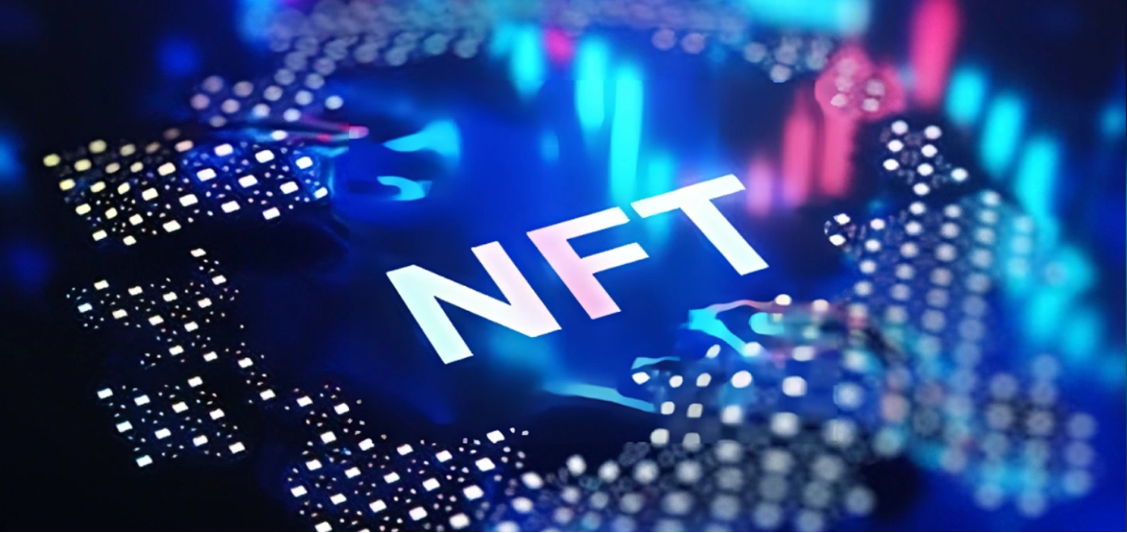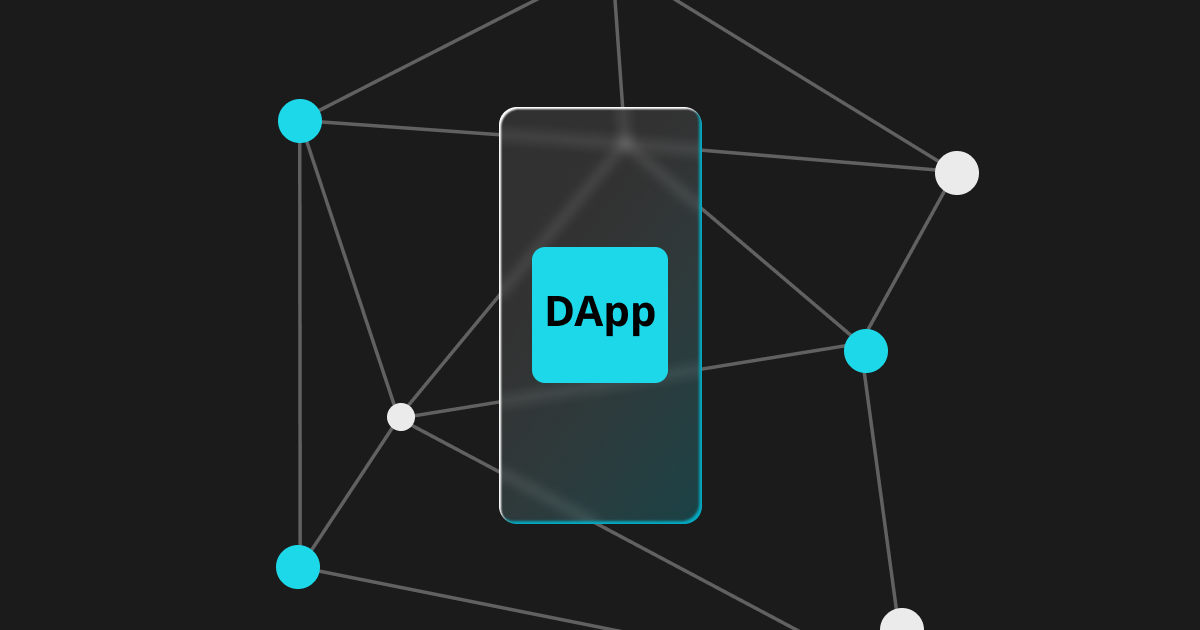
Comparison of the Best Multi-Party Computation (MPC) Wallet Solutions in 2025
The best multi-party computation (MPC) wallets in 2025 include Fireblocks, ZenGo, and Safeheron, as they offer advanced security, seamless ease of use, and powerful self-hosting capabilities. These wallet platforms have led the entire industry by protecting against cyber threats, providing seed-free key management, and supporting AI-driven authentication. Experts evaluate each wallet from aspects such as security, ease of use, multi-currency compatibility and cost. The comparison of multi-party computing solutions in 2025 highlights that MPC wallets are the future of self-custody and digital asset security.
Key points
- The MPC wallet divides the private key into multiple parts and enhances security by eliminating single points of failure.
- These wallets support many cryptocurrencies and blockchains, making asset management flexible and efficient.
- Top MPC wallets offer user-friendly features such as seed-free phrase recovery and biometric authentication for easy access.
- Both institutions and individuals can benefit from the powerful security, privacy and smooth transaction approval of MPC wallets.
- Choosing the right wallet depends on your needs, with a focus on security, ease of use, supported assets and recovery options.
What is an MPC wallet
MPC technology
Multi-party computation (MPC) is the foundation of today's most advanced wallet solutions. This technology divides the private key into multiple encrypted fragments, each of which is stored on a different device or held by a different party. No individual or system will hold the complete private key. On the contrary, each participant uses a distributed key generation protocol to generate their own fragments. When a user wants to sign a transaction, all parties will cooperate to generate a valid signature. The complete private key will never be reconstructed at any time.
The working principle of the MPC wallet
- The wallet divides the private key into multiple encrypted fragments.
- Each fragment is generated and stored separately, usually on different devices.
- To approve a transaction, there must be a sufficient number of fragments cooperating.
- The signing process takes place off-chain, and the final signature is broadcast to the blockchain.
- End-to-end encryption protects communication among all parties and ensures the security of the entire process.
This method eliminates single points of failure. An attacker needs to invade multiple devices simultaneously in order to gain access. Multi-party computing also enables the execution of fine-grained policies and flexible access control, making these wallets suitable for both individuals and organizations.
Advantages in 2025
Compared with traditional wallets, MPC wallets offer many advantages in 2025, especially as digital asset management continues to develop.
- Enhanced security is the main advantage. By distributing key shares across multiple devices, these wallets eliminate single points of failure and reduce the risk of theft or unauthorized access.
- Multi-party computing has achieved cross-chain compatibility. Users can manage assets on different blockchain platforms without the need for additional infrastructure.
- The operational efficiency has been enhanced through an automated transaction approval and dynamic signature scheme. This has led to a faster and more scalable workflow.
- Since the signature occurs off-chain, transaction fees are reduced and it is presented as a single address on-chain, thereby enhancing cost-effectiveness.
- Privacy has been enhanced. Off-chain signatures hide sensitive information outside the public blockchain, allowing for internal audits without exposing user data.
- User-friendly features such as biometric authentication and seed-free phrase recovery make these wallets easy to use for a wider audience.
The security and future prospects of the MPC wallet have been further verified through the real adoption by major companies and the use of advanced cryptographic technologies such as threshold signatures and continuous key share refreshing. By 2025, multi-party computing will become the cornerstone of secure, efficient and flexible digital asset management.
The best MPC wallet
Key functions
The best MPC wallet of 2025 offers a range of features to meet the needs of both individuals and institutions. These wallets focus on powerful digital asset security, ease of use and flexibility. These wallets eliminate single points of failure by dividing the private key into multiple encrypted parts. Many platforms now offer seed-free phrase registration, which not only enhances security but also improves the user experience. Open source projects like Safeheron provide transparent MPC implementations, while institutional-level wallets like Ledger Vault and MetaMask Institutional support multi-user access and hardware integration. Ongoing development includes intelligent recovery, gas-free transactions, and compliance-ready infrastructure, making these wallets suitable for a wide range of application scenarios.
Safety
Security is the top priority for any multi-signature MPC wallet. The leading MPC wallet adopts a multi-level security approach, combining advanced cryptography with practical protection measures. The key security mechanisms include:
- By using multi-party computing technology to divide the private key into three or more parts, the risk of being invaded is reduced.
- Biometric authentication and two-factor authentication prevent unauthorized access.
- Encrypted storage of sensitive data and an advanced private key management system.
- Innovative recovery solutions protect access without exposing seed phrases.
- Combine hardware and mobile wallets to enhance security.
- Multi-chain support, including integration with networks such as Tron, provides broader protection.
Wallet providers will also promptly address vulnerabilities. For instance, researchers at Fireblocks discovered critical flaws in major MPC protocols, but the liability disclosures and prompt fixes by providers such as Coinbase Wallet and ZenGo prevented financial losses. Fireblocks' own protocol remains unaffected due to the need for zero-knowledge proofs and multi-level security. Regular bug bounties and crowdsourcing tests further enhance the security of the wallet.
The best MPC wallet of 2025 sets new standards for enhanced security, private key management and authentication. Their features and multi-signature capabilities make them an ideal choice for individuals and institutions in digital asset management.
Comparison of MPC Solutions in 2025
Overview of the Wallet
The comparison of MPC solutions in 2025 highlights a diverse landscape of digital asset management solution providers. Each wallet solution offers unique features to meet the needs of different users.
- ZenGo stands out as a keyless wallet, eliminating the need for traditional private key management. It uses mathematical secret sharing and three-factor authentication, making it easy for both novice and experienced users to use.
- Fireblocks offers enterprise-level security, hardware isolation, and support for a wide range of assets for institutions.
- CoinWallet by CoinsDo focuses on providing multi-party digital asset management solutions with customizable access control for business users.
- Coinbase Wallet offers powerful multi-signature MPC support and extensive asset compatibility, attracting organizations with diverse crypto assets.
- Qredo offers decentralized hosting and cross-chain settlement, supporting institutional-level workflows.
- Safeheron emphasizes open-source transparency and flexible policy control, making it the preferred digital asset management solution for enterprises.
- OKX Wallet offers non-custodial, multi-chain access and integrates decentralized exchange functionality for advanced users.
- Vaultody focuses on institutional digital asset custody solutions, combining MPC with compliance tools to support regulated entities.
Other notable solutions, such as Lit Wallet and Curv, offer dedicated security features and user-friendly interfaces. A comparison of MPC solutions in 2025 shows that users can choose from multiple wallets based on their personal or institutional needs.
Supported assets
The range of supported assets plays a key role in the comparison of MPC solutions in 2025. Leading MPC wallets, such as Cobo, support over 80 blockchains and more than 3,000 tokens, including Bitcoin, Ethereum, stablecoins, tokenized physical assets, and emerging digital currencies (like central bank digital currencies). Safeheron and Fireblocks also offer a wide range of asset support, enabling institutions to manage complex investment portfolios across multiple chains. Hardware wallets, such as Ledger, offer similar compatibility but focus on individual users. The MPC wallet emphasizes institutional flexibility and comprehensive asset management, making it the preferred solution for organizations with diverse digital asset needs.
User experience
User experience remains an important consideration in the comparison of MPC solutions in 2025. Wallets like ZenGo eliminate seed phrases, reduce vulnerability risks and simplify the registration process. Many solutions divide the private key into multiple parts, enhancing security while maintaining ease of use. A simple interface, excellent support and intuitive navigation define the best wallet. For instance, ZenGo integrates built-in exchanges and savings accounts, making it suitable for both beginners and experts. Fireblocks and Coinbase Wallet simplify transaction approval for institutions, while OKX Wallet provides advanced features for advanced users. These enhancements in ease of use ensure that individuals and organizations can manage digital assets efficiently and securely.
Unique function
The following is a comparison of MPC wallets and their unique features organized in table form:
| Wallet name | Unique function |
|---|---|
| ZenGo | Keyless design, three-factor authentication (biometric, device, server), support for over 70 cryptocurrencies, user-friendly mobile interface, no seed phrases |
| Fireblocks | Enterprise-level security, MPC-CMP algorithm, hardware isolation, end-to-end encryption, fund management tool, supporting over 1,100 tokens |
| Coinbase Wallet | Institutional multi-signature MPC, supporting over 248 cryptocurrencies and 3 fiat currencies, cloud backup, biometric identity verification, and seamless integration with Coinbase Pro |
| OKX Wallet | Non-custodial, multi-chain access, built-in decentralized exchange, advanced DeFi features |
| Qredo | Decentralized hosting, cross-chain settlement, policy-based workflow, and compliance-ready infrastructure |
| Safeheron | Open-source MPC, flexible policy control, transparent security, focused on institutions |
| Vaultody | Institutional hosting, compliance tools, customizable access control, regulatory support |
| CoinWallet by CoinsDo | Customizable multi-party access, digital asset management solutions for business users, policy-based control |
Fireblocks stands out with its MPC-CMP algorithm and wallet-as-a-service platform, making transaction control more precise and operations more flexible. ZenGo has set a new standard for personal security and convenience by eliminating seed phrases and adopting three-factor authentication. OKX Wallet's integrated DEX and multi-chain support have attracted advanced users seeking comprehensive DeFi access.
Advantages and disadvantages
| In terms of | MPC Wallet | Traditional wallet (hot/cold) | Multi-signature wallet |
|---|---|---|---|
| Safety | High, divide the private key into shares to eliminate single points of failure | Hot wallets are vulnerable to attacks online. Cold wallets are safe offline but not flexible enough | Rely on multiple on-chain signatures |
| Accessibility | It can be accessed from multiple devices without exposing the complete private key | Hot wallets are easy to access. Cold wallets require physical devices | Coordination among the signatories is required |
| User experience | A smooth, intuitive and flexible trading process with no seed phrase recovery | The hot wallet is user-friendly. Cold wallets are not convenient enough | Due to the coordination among multiple parties, the speed is relatively slow |
| Restore options | Advanced mechanisms enable recovery even if some shares are lost | The recovery of hot wallets is limited. A cold wallet is difficult to recover if lost | Recovery depends on the availability of all signatories |
| Supported assets | Extensive, multi-chain and cross-chain asset management | It depends on the type of wallet and is usually not flexible enough | Usually limited to a specific blockchain |
| Transaction fees | Lower, off-chain signatures reduce costs | Standard charges for hot/cold wallets | It is relatively high. Each signature will increase the on-chain data |
| Privacy | Enhanced, broadcast only one signature and hide the identity of the signer | Hot wallets have poor privacy. Cold wallets offer good privacy but are not flexible enough | The signatures of all co-signers are revealed on the chain |
| Set complexity | Higher initial Settings require an understanding of MPC technology | The hot wallet setup is simple. The complexity of a cold wallet is moderate | Medium level, requiring coordination among the signatories |
MPC wallets offer decentralized control, privacy and speed, making them suitable for both personal and business use. They support dynamic strategy updates, multi-chain portfolios, and compliance with regulatory requirements. However, they may involve high computational overhead and initial setup complexity. Traditional wallets offer simplicity, but lack the advanced security and flexibility of MPC solutions. Multi-signature wallets offer transparency, but they typically limit blockchain compatibility and increase transaction costs.
A comparison of MPC solutions in 2025 shows that MPC wallets have become the preferred digital asset management solution for users seeking advanced features, strong security and seamless user experience. Both institutions and individuals can benefit from the flexibility, privacy and operational efficiency provided by these solutions.
Best MPC Wallet Comparison Table
Choosing the right wallet has a significant impact on digital asset management. The following table compares the leading MPC wallet solutions in 2025. Each wallet offers a unique combination of security, ease of use and features, designed to meet the needs of different types of users.
| Wallet name | Safety features | Usability highlights | Supported assets and unique features |
|---|---|---|---|
| ZenGo | Keyless design, adopting mathematical secret sharing; Three-factor authentication (biometric identification, device, server); Trade color coding to enhance protection | Intuitive and user-friendly interface; Both novice and experienced users can register easily | Supports over 70 types of cryptocurrencies; Built-in exchange; Savings account Suitable for individuals who pursue simplicity and safety |
| Coinbase Wallet | Multi-signature MPC solution; The secure area is used for the private key. There is no single entity control | Clean user interface, suitable for both beginners and experts; NFT storage Interact with decentralized applications | Supports over 248 types of cryptocurrencies; Seamless integration with Coinbase Pro; Targeted at institutions and advanced users |
| OKX Wallet | Face recognition Email verification; Unmanaged, the private key is stored on the device | Advanced functions; Complex interface, suitable for experienced users | Multi-chain access (over 60 blockchains); Built-in decentralized exchange; Portfolio tracker Designed for advanced traders |
| Fireblocks | Enterprise-level MPC-CMP algorithm Hardware isolation End-to-end encryption | Simplify the workflow for the team; Policy-based control | Supports over 1,100 tokens; Fund management tools; Wallet as a Service Most suitable for institutions and enterprises |
| Qredo | Decentralized custody Policy-based workflow Compliance-ready infrastructure | Provide flexible control for the organization; Cross-chain settlement | Extensive asset support; Cross-chain transfer Suitable for regulated enterprises |
| Safeheron | Open source MPC Flexible strategic control; Transparent security practices | It can be customized according to the needs of enterprises. A clear audit trajectory | Support multiple blockchains; Open source and transparent; Favored by organizations that value security |
When choosing a wallet, users should consider their level of experience, the types of assets they plan to manage, and the specific security requirements of their organization or personal investment portfolio.
ZenGo stands out for its keyless approach and ease of use, making it an ideal choice for individuals. Coinbase Wallet strikes a balance between security and ease of use, attracting both retail and institutional users. OKX Wallet offers multi-chain access and a powerful feature set for advanced traders. Fireblocks and Qredo focus on institutional needs, offering advanced controls and a wide range of asset support. Safeheron offers open-source transparency, attracting organizations that focus on auditability and control.
Each wallet in the table brings different advantages, enabling users to match their needs with the appropriate solutions. The contrast highlights how wallet providers continue to innovate to offer advanced features and an improved user experience by 2025.
An alternative to MPC wallets
Account abstraction
Account abstraction is a new approach to digital asset management. This solution mainly uses smart contract technology on Ethereum and EVM-compatible chains to create programmable accounts. These accounts allow users to set custom rules for transactions, such as multi-factor authentication or spending limits. Unlike traditional wallets, account abstraction combines externally owned accounts and contract accounts into a flexible structure.
The main difference between account abstraction and MPC wallet technology lies in their focus. Account abstraction focuses on programmability and user experience, while MPC wallets prioritize privacy and distributed key management. The following table highlights their main differences:
| In terms of | Account Abstraction (AA | MPC wallet technology |
|---|---|---|
| Application/Environment | Centered on the Ethereum Virtual Machine (EVM) | Blockchain agnosticism |
| Account type | Smart contract account | Externally owned accounts, off-chain multi-signature |
| Usability | Advanced DeFi features, smart contracts | Simple asset management without the scalability of smart contracts |
| Safety | Flexible multi-signature, 2FA, biometric recognition | Privacy protection, distributed key management |
| Privacy | Enhanced by cryptography | Essentially protecting privacy |
| Web3 compatibility | Native integration | Extra work is required. |
Account abstraction supports functions such as transaction batch processing and fee abstraction, thereby enhancing the user experience. However, it usually requires more complex Settings and is limited to specific blockchains. The MPC wallet offers a smoother registration process and efficient gas usage, making it a powerful alternative for users seeking simplicity.
Hardware options
Hardware wallets remain a popular choice for users who value physical security. These devices store private keys in an offline environment, protecting assets from online threats. In 2025, wallets such as Ledger Stax, Cypherock, Trezor, Tangem and Ellipal will be leading in the market. Each wallet offers unique features such as biometric locks, touchscreen interfaces, and support for thousands of cryptocurrencies.
| Wallet name | Key functions and security | Advantages | Disadvantage |
|---|---|---|---|
| Ledger Stax | The best choice for daily DeFi use | Strong security and wide support for multiple cryptocurrencies | no |
| Cypherock | Decentralized private key storage, inheritance function | Enhanced security, nominee recovery options | The setup is complicated for beginners |
| Trezor | Industry-leading encryption technology has never been cracked by online attacks | Supports over 1,000 cryptocurrencies with seamless recovery | It's more expensive than software wallets |
| Tangem | EAL6+ security, offline key generation | Lightweight, biometric lock, easy to set up | There was no clear recovery plan when a wallet was lost |
| Ellipal | Cold storage, touchscreen, compatible with MetaMask | Offline storage, easy-to-use touchscreen | no |
MPC wallets like ZenGo eliminate the need for seed phrases by using multi-party computational cryptography. This method creates a keyless security model, making the setup and recovery process easier for users. Hardware wallets focus on physical protection and extensive asset support, but they require traditional recovery methods and careful management of backup phrases.
When choosing a wallet solution, users should consider their own needs. Hardware wallets offer powerful offline security, while MPC wallets provide innovative cryptographic protection and user-friendly recovery functions. Both of these solutions are constantly evolving, narrowing the gap between usability and security.
Choose the right wallet
Key considerations
In 2025, choosing the right wallet for secure self-custody requires a careful assessment of multiple factors. Users should pay attention to both technical and practical aspects to ensure that digital assets are both secure and easily accessible. The following list Outlines the most important considerations:
- Understand the underlying technology, such as the Threshold Signature Scheme (TSS), which divides the private key into multiple parts and stores them in a distributed manner. This method ensures that the private key will never be fully exposed.
- Confirm whether the wallet supports multi-device collaborative signatures and cross-chain compatibility. This feature enables flexible management of assets on different blockchains.
- Evaluate the provider's reputation, technical rigor and audit status. Strong records and regular security audits help reduce the risks brought about by centralized or hidden vulnerabilities.
- Look for enhanced security features, including distributed key management and elimination of seed phrase backup. These functions enhance security and user experience.
- Check whether it has regulatory compliance capabilities, such as multi-approval workflows and audit trails. These are particularly important for institutions that manage large investment portfolios.
- Choose a user-friendly interface to simplify asset overview, transaction history, and integration with decentralized applications.
- Evaluate institutional-level features such as multi-signature support, gas-free signatures, and open-source transparency.
- Be aware of potential risks, such as recovery challenges and the complexity of MPC implementation. Give priority to wallets that have been thoroughly audited and offer strong support.
When choosing a self-hosted wallet, balancing security, ease of use, compliance and trust can help users make informed decisions.
User requirements
Different users have different needs, which will affect their choice of wallets. The following table compares how managed and unmanaged MPC wallets meet these requirements:
| User requirements/User profile | Managed MPC wallet | Non-custodial MPC wallet |
|---|---|---|
| Usability | "High; Suitable for beginners or users who prefer managed management | Lower; It is necessary to understand the concepts of security and blockchain |
| Control over assets | Limited; The key is managed by a third party | Complete control; The user retains full control over the private key |
| Restore options | Available; A third party can assist in restoring the account | None; The phrase "loss recovery" means that the asset has been lost |
| Safety responsibility | Managed by the custodian, including auditing and fraud detection | The user is responsible for protecting the key and managing security |
| Privacy | Lower; Service providers can access transaction data | Relatively high; Third parties have no access to funds or transaction details |
| "Counterparty risk" | Exist; The risk of third-party intrusion is mitigated through the MPC architecture | Does not exist; Do not rely on third parties for security protection |
| Applicable population | Users who are not very tech-savvy, beginners, or those who trust third-party management | Advanced users who value autonomy, privacy and control rights |
Institutions may need to support asynchronous approval, offline devices, and wallet functions that comply with regulatory requirements. Individuals who value privacy and autonomy usually tend to choose non-custodial wallets, while beginners who are not very familiar with digital assets may opt for custodial solutions for a simpler user experience. Users should match the functions of their wallets based on their operational needs, performance expectations, and ecosystem compatibility to achieve secure self-custody.
In 2025, choosing the right wallet is crucial for both individuals and businesses. Each wallet has unique advantages in terms of security, ease of use and asset support. Users should:
- Evaluate the needs of individuals or organizations.
- Test several wallet options before making a decision.
- Review security features and recovery methods.
Experts predict that wallet technology will continue to evolve, setting new standards for the security of digital assets and user experience.
Frequently Asked Questions
Why are MPC wallets more secure than traditional wallets?
The MPC wallet divides the private key into multiple encrypted parts. No device will hold a complete private key. An attacker must invade multiple devices simultaneously. This method eliminates single points of failure and enhances overall safety.
If a user loses access to a device, can they recover their assets?
Sure. Most MPC wallets use a threshold scheme. If users still control a sufficient number of key shares, they can restore their assets. Some wallets also offer smart recovery options or social recovery features to enhance security.
Does the MPC wallet support multiple cryptocurrencies?
Most leading MPC wallets support a wide range of cryptocurrencies. Users can manage Bitcoin, Ethereum, stablecoins and many other tokens in one wallet. This function helps individuals and institutions manage diverse investment portfolios.
Is the MPC wallet suitable for beginners?
Many MPC wallets offer user-friendly interfaces and a registration process without seed phrases. Beginners can easily set up their wallets. Some wallets also offer step-by-step guides and customer support to help new users manage their digital assets safely.
How does the MPC wallet handle transaction approvals?
The MPC wallet requires the approval of multiple parties or devices for transactions. The wallet securely signs transactions by combining encrypted key shares. This process ensures that no party can transfer funds alone.
Before storing a large amount of digital assets, always test the wallet's recovery function.





